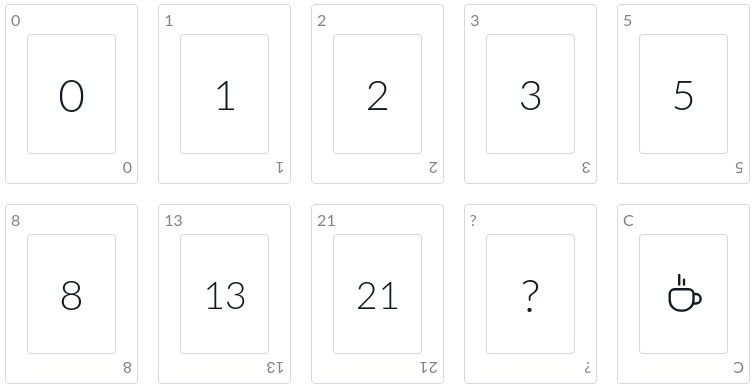Fibonacci Estimation Technique
 Create a free Fibonacci session
Create a free Fibonacci session In the dynamic routine of Agile teams, efficiency is fundamental. Teams strive to deliver high-quality work within tight deadlines while adapting to evolving requirements. In this fast-paced environment, the Fibonacci Technique helps teams estimate story points with precision!
What is the Fibonacci agile estimation technique
The Fibonacci Agile Estimation Technique, often referred to as Fibonacci Estimation, is a method used by Agile teams to estimate the relative size of user stories or tasks during sprint planning.
This technique utilizes the Fibonacci sequence - a series of numbers where each number is the sum of the two preceding ones (0, 1, 1, 2, 3, 5, 8, 13, and so on).
In Fibonacci Estimation, team members assign Fibonacci numbers to represent the complexity or effort required to complete a particular task. Rather than focusing on precise numerical values, the emphasis lies on relative sizing – comparing the effort of one task to another.
Why use the Fibonacci agile estimation technique
The Fibonacci Estimation is simple and flexible. By leveraging the Fibonacci sequence, teams can easily differentiate between small and large tasks while acknowledging the uncertainty inherent in estimating complex work.
One of the primary benefits of this technique is its ability to facilitate meaningful discussions among team members. As they collaboratively assign Fibonacci numbers to user stories, valuable insights emerge regarding the complexity of tasks and potential dependencies.
Fibonacci Estimation also encourages a mindset of continuous improvement. Over time, teams refine their estimation skills based on past experiences, leading to greater accuracy and predictability in sprint planning. This iterative approach promotes efficiency and empowers teams to deliver value consistently.
How to use the Fibonacci agile estimation technique
Implementing the Fibonacci Agile Estimation Technique is straightforward! Here's a step-by-step guide to do it:
- Gather Your Team: Bring together all relevant stakeholders for sprint planning sessions. Ensure everyone understands the purpose and principles of Fibonacci Estimation.
- Select User Stories: Pick stories or tasks from the product backlog, breaking down the larger ones as needed.
- Assign Fibonacci Numbers: Select one item and present it to the team. Each team member then selects a Fibonacci number representing their estimate.
- Reach Consensus: Once all votes are shown, discuss any disparities or insights and choose a final Fibonacci number as an estimate.
- Iterate: Do this same process for every item in the backlog.
Alternative agile estimation techniques
The key to successful agile estimation sessions is finding the best technique for your team or project. Therefore, you may also want to check out the Scrum Poker and T-Shirt Sizing techniques and pick the most suitable estimation poker deck for you!
Online Fibonacci Estimation Tool
By adopting the values of teamwork and continuous improvement, using Fibonacci estimation helps teams hone their estimating tasks in Agile projects.
An online tool like PlanITPoker fits perfectly with these principles and boosts the effectiveness of this technique, offering features such as:
- Decks that you can customize further to fit your needs
- Automatically calculates the average effort estimated
- Allows you to set a final estimate based on consensus
- Charts with the distribution of votes
- Quick access to your previous sessions
- and much more!
Ready to apply the Fibonacci sequence on your next estimation session? Try PlanITPoker for free!